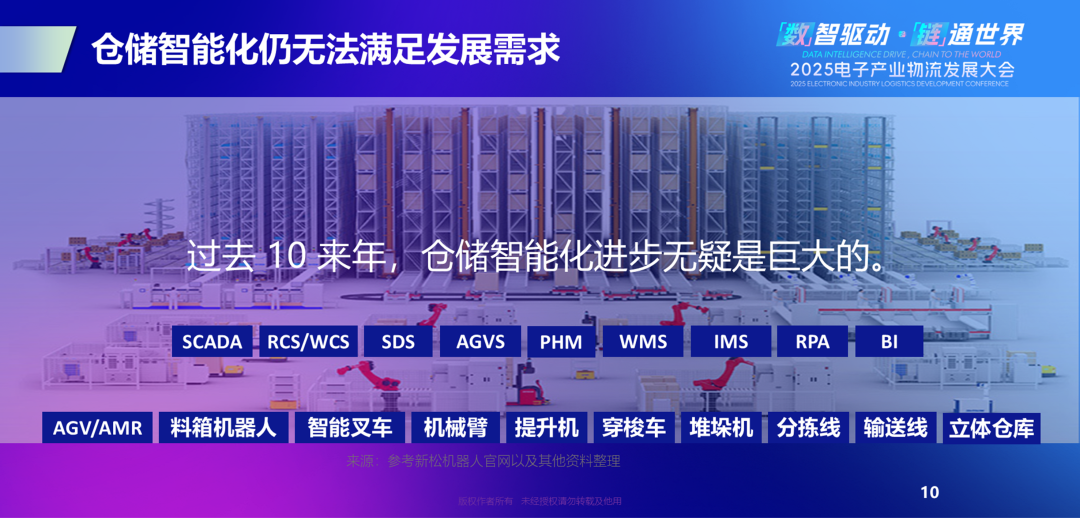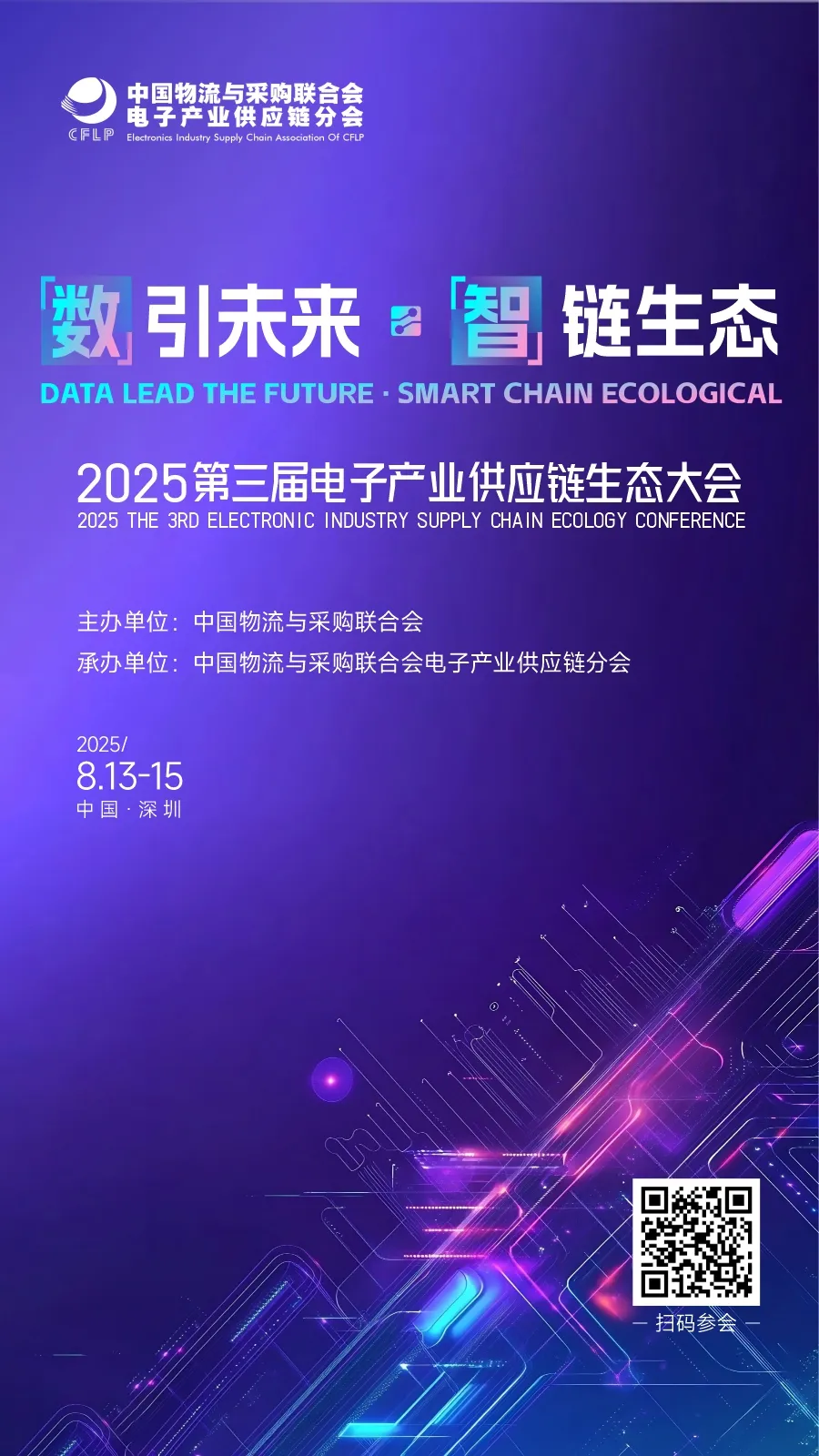On April 18, the 2025 Electronic Industry Logistics Development Conference was successfully held in Guangzhou. The conference invited Associate Professor Zheng Huawen from Shenzhen Technology University to deliver a keynote speech.

In his keynote speech titled “New Paradigm for Intelligent Warehousing Development in the Wave of AI and Humanoid Robots“, Zheng Huawen shared the following insights:
1. There is a Huge Space for Intelligent Upgrading in the Warehousing Sector
The potential for intelligent upgrades in the warehousing sector is vast, with a total national warehouse area of 1,004,871,000 square meters, a rentable area of 172,574,000 square meters, and an area under construction of 16,550,000 square meters. However, 80% of warehouses still lack any automation facilities. The warehousing and logistics workforce is approximately 10 million, and with the proliferation of automation, the demand for automated operation and maintenance personnel is growing at over 10%. Additionally, the complexity of intelligent warehousing scenarios involves multiple aspects such as order management, equipment management, and inbound/outbound management, with significant industry differentiation. Despite significant progress in warehousing intelligence over the past decade, current developments still do not meet demand, indicating a broad space for future growth.

2. The Application of AI and Robots in Warehousing is Still in Its Infancy
The combination of AI and robotics has brought new opportunities to the warehousing sector, but it is still in its early stages. Humanoid robots, as important carriers of AI technology, have expanded their mobility, dexterity, perception, and intelligence through advanced AI, enabling them to perform various tasks and switch flexibly. The year 2025 is seen as the year of mass production for humanoid robots, with global sales expected to reach tens of thousands, and internal logistics and warehousing logistics are among the most promising fields for large-scale implementation.
Foreign companies such as Boston Dynamics, Tesla, and Figure AI have made significant progress in the field of humanoid robots, with some products already piloted in warehousing logistics scenarios. For example, in Amazon’s warehousing pilot, the Digit robot is used for automated handling from shelves to workstations, significantly improving efficiency. Domestic companies like UBTECH and Yushu Technology are also actively laying out in the humanoid robot field, with some products entering factory training stages. However, overall, the application of humanoid robots in warehousing logistics is still in the exploratory and pilot stages, and there are still gaps in precision and cost compared to traditional robots.

3. AI and Humanoid Robots Will Coexist and Integrate with Traditional Warehousing Automation
AI and humanoid robots will become an important development direction for future intelligent warehousing, integrating with traditional warehousing automation equipment. In the next decade, the application of AI and humanoid robots in warehousing is full of expectations, but it is still in the initial stage. Humanoid robots will work collaboratively with AGVs/AMRs, automated storage systems, sorting and conveying equipment, and other traditional warehousing automation devices, forming a model of integrated coexistence. Various humanoid robot companies will promote industry development from different angles, with established players like UBTECH, startups like Zhiyuan Robotics, and cross-industry players like Xpeng Motors all contributing to technological advancement and product innovation.
Humanoid robots will gradually replace human labor in tasks that are undesirable or difficult for humans, such as repetitive handling and work in hazardous environments, while also driving traditional warehousing automation products towards greater intelligence and flexibility. Ultimately, the deep integration of AI and humanoid robots with traditional warehousing intelligence will bring a new development paradigm to the warehousing sector.

Overall, the wave of AI and humanoid robots brings unprecedented opportunities and challenges to the intelligent warehousing sector. The demand for warehousing intelligence is enormous, and the continuous development and application of AI and humanoid robot technology will gradually push warehousing automation to a higher level. In the future, AI and humanoid robots will deeply integrate with traditional warehousing automation equipment, forming a complementary and symbiotic development pattern that will help the warehousing sector achieve intelligent upgrades, reduce costs, and increase efficiency, while also providing new ideas and solutions to address labor shortages.
Author’s Biography
 END
END



